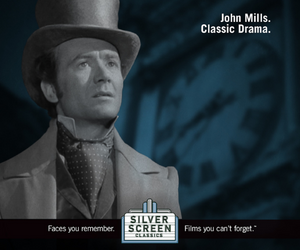HEADLINES IN NEWSPAPERS this week say it all: “Rainbow City” wrote the editors of The Toronto Star as their headline and Vancouver Sun noted that their city “is now more multicultural than Miami, Los Angeles or New York City.”
The Statistics Canada census release this week highlighted the extent of change in the Canadian population – including the fact that Canada is now home to its highest proportion of immigrants since 1931 – a 75-year high. So how does this impact the broadcasting business? Without question, there are significant opportunities for ethnic media as a result of this new population dynamic. But that is only half of the story and obscures a real opportunity for ‘mainstream’ or conventional broadcasters.
The census results show that nearly half of Toronto and Vancouver’s populations are from diverse backgrounds and Chinese and South Asian languages are growing at a record pace. The size of Chinese-language population (speaking either Cantonese or Mandarin), for example, is nearly the same as that of the entire population of Edmonton, Alberta, Canada’s sixth largest market.
And despite these large numbers, a casual scan of radio and TV ratings in our major markets would suggest an alternate reality: one that makes most ethnic radio and TV broadcast entities invisible to advertisers and, by extension, to corporate Canada and to policy makers.
Simply put, the reason for what is now becoming a gross ratings distortion in major markets is a lack of proper recruitment and representation of ethnically diverse Canadians—in particular those whose comfort language at home is other than English or French—on audience measurement panels. Despite calls for change and improvement over the years, nothing substantive has been done. In the U.S., the measurement system was updated to better represent Hispanic and African-American audiences only recently – after almost a decade of political and business pressure.
What would the world look like if we could wave a magic wand and fix the system?
First of all, ethnic broadcasters would be officially recognized for their successes. For example, Fairchild TV reaches more than twice as many Chinese Canadians compared to the top mainstream English-language broadcaster in Vancouver on a weekly basis according to our 2006 Diversity in Canada study. And TLN has a similar story among Spanish-speaking audiences in Toronto. OMNI TV and CHIN radio in Toronto, Channel M in Vancouver, the multi-faith broadcaster Vision, among others, would see their ratings increase, beyond the audiences tuning into their mainstream English-language programs.
But perhaps equally relevant would be the impact on mainstream broadcasting.
In radio for example, stations doing a good job of connecting with new and old Canadian audiences would get credit for that in their ratings. For example, 680 News performs above average in Toronto among South Asian and Arab Canadians as the top weekly- reach station. It is in the #3 spot in reach among Chinese Canadians according to Diversity in Canada. Music formats with more cosmopolitan approaches also do better among diverse populations. Conversely, stations with dated formats and approaches do worse.
On television, programs on channels such as Sportsnet (particularly basketball) and The Food Network are significantly more popular among Cantonese- and Mandarin- language households. The cultural relevance of anime, among other things, makes YTV an above-average popular destination for Chinese Canadian kids and their parents in a co-viewing dynamic, according to Diversity in Canada.
In a similar vein, advance findings from new research in field suggests above-average audiences for current prime time shows such as Heroes, Grey’s Anatomy, Survivor: China, and Dancing with the Stars among new Canadians. Strong diverse casts and global themes clearly resonate with new Canadian audiences.
So why should the industry act on the audience measurement front now? There are two major costs to inaction:
The first cost is a lack of a business incentive (distinct from a regulatory requirement) to create or show programs with strong, diverse casts unless they strongly and unequivocally cross over to ‘mainstream’ audiences where rating points are captured. Content creators who make efforts to represent the contemporary diverse reality do not get full credit for their shows’ appeal if the audience measurement system does not capture the full breadth of audience watching.
The second cost is an ever-widening credibility gap for the broadcasting system as a whole. Marketers in particular are beginning to accept that many alternative media outlets command significant audiences and see the current system as flawed in this respect.
The result is a bypass of the accepted measurement currency to reach the fast-growing population segments. This movement is already underway as some of Canada’s leading marketers ranging from Wal-Mart, Canadian Tire, Chrysler and Sun Life to TD Canada Trust and Rogers are voting with their ad dollars to become heavy advertisers in media not captured by BBM ratings.
Isn’t it time for old Canada to stop talking to itself?
Kaan Yigit is the President of Solutions Research Group in Toronto. SRG ‘s landmark Diversity in Canada syndicated study interviewed 3,000 Canadians in Toronto, Vancouver and Montreal in nine languages about their lifestyles, attitudes and media habits. The subscriber base for the 2006 study (and its upcoming 2007-08 editions) is now over 40 major Canadian organizations including national advertisers and government departments.



